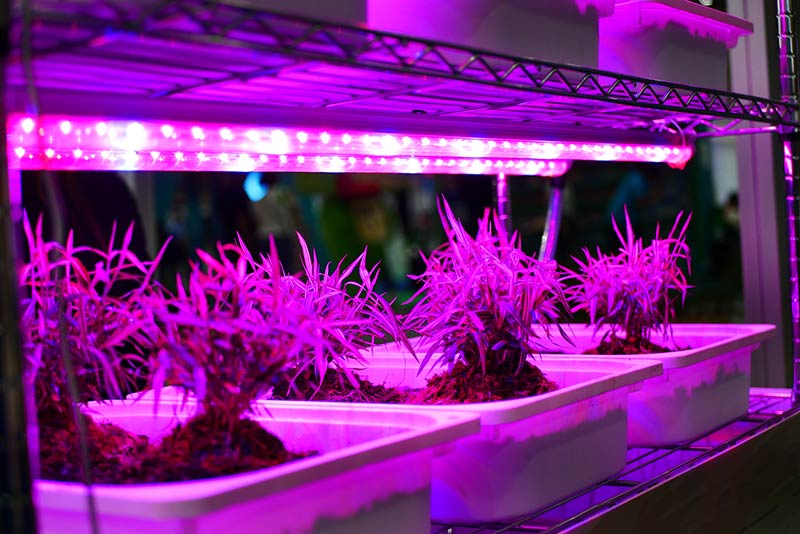Analysis On Impact of Covid-19 On The Market
The latest epidemic of COVID-19 which continues to devastate societies with high death tolls and untold psychosocial and devastating economic effects is a vivid reminder of nature's ability to threaten contemporary health care. The pandemic calls for rapid mobilization of all potential therapeutic resources including phototherapy, one of the most successful therapies used to minimize the effects of the 1918 "Spanish Influenza" pandemic. The paper cites many studies that indicate that phototherapy has an enormous potential to reduce the effects of coronavirus diseases and proposes ways for the healthcare industry to integrate. Evidence suggests that violet/blue (400–470 nm) light is antimicrobial to various bacteria and is responsible for Niels Ryberg Finsen's Nobel-winning tuberculosis treatment. Further evidence suggests that blue light inactivates variety of viruses including the common flu coronavirus and that red and near infrared light in laboratory animals reduces respiratory disorders similar to the complications associated with virus.
In addition, red light has been shown to minimize chronic obstructive pulmonary disease and bronchial asthma in patients. These results call for immediate measures to further investigate the clinical importance of light and not to wait for another pandemic to act as a reminder. The ubiquity of low-cost light emitting lasers and light emitting diodes (LEDs) makes it reasonably easy to create healthy, low-cost light-based devices with the potential to minimize infections, sanitizing equipment, medical facilities, emergency care vehicles, homes and the general environment.
AFTERMATH OF COVID-19 AND GOVERNMENT INITIATIVE TO BOOST THE MARKET
Lockdowns and stringent travel restrictions around the world to avoid coronavirus spread have also resulted in a trade suspension. As a result, many countries and regions that respond heavily to food imports have suffered from food shortages. Maintaining food security and rising food self-sufficiency are becoming more and more important during and after the COVID-19 crisis. Innovative agricultural technology such as vertical agriculture based on LED lighting and hydroponics has made a breakthrough in limiting weather conditions and is considered one of the strategies to tackle the issue of global food scarcity. LED inside noted that several local governments and businesses have been collaborating to set up cultivation facilities since 2020 to facilitate agricultural transformation. They are also trying to create a module for urban farming and plant processing to supply food in cities. Singapore and the UAE, both of which have imported 90% of food have recently announced that they are investing a significant amount of money to create a domestic vertical farm.
STRATEGIC DECISIONS FOR MANUFACTURERS AFTER COVID-19 TO GAIN COMPETITIVE MARKET SHARE
Apart from being a major source of light for large-scale vertical farming facilities, LED horticulture lighting can also be used for household farming, enabling consumers to grow their own food during the lock-up and enhancing food security. Combining all markets powered by agricultural transformation, it is assumed that the demand for LED horticulture lighting will continue to increase. Despite the rapid transition to LED-based vehicle lighting, global development of motor vehicles has stalled. According to Freedonia researchers, global production of motor vehicles decreased marginally in 2018 and 2019 as compared to a drastic decline in 2020 due to the COVID-19 pandemic. This is the same amount of time that Osram Continental has been involved and has not given a good demand to the business.
There are various UV LED technology companies such as SETi and Seoul Viosys which are developing UV LED products that provide solid coronavirus sterilization in the air and on goods such as phones and face masks. Along with coronavirus, these advanced technologies would have the capacity to sterilize dangerous bacteria such as staphylococcus aureus and Escherichia coli. These advancements are intensifying the competitive environment of UV LED technology and goods. To disinfect larger areas, these companies are deploying robots that use UV light band that can sterilize the coronavirus region. The introduction of robots during the COVID-19 pandemic creates space for more technological developments, thus boosting the grow light market development.
Impact On Demand
Apart from being a major source of light for large-scale vertical farming facilities, LED horticulture lighting can also be used for household farming, enabling consumers to grow their own food during the lock-up and enhancing food security. Combining all markets powered by agricultural transformation, it is assumed that the demand for LED horticulture lighting will continue to increase. The introduction of UV LED technology is due to traditional UV LEDs with usually short lifetime (10,000 hours) and high cost. The company said that it has extended the lifetime of its UV LEDs to more than 50,000 hours, comparable to the visible LEDs used for general lighting applications and also expanded production ability to achieve cost competitiveness.
For instance,
- In May 2020, The Lighting Industry Association (LIA) surveyed that the average capacity of lighting companies is around 45 per cent. Approximately 44 per cent of staff is currently furloughed and only 4 per cent reported that they had made any redundancies as a direct result of coronavirus closure.
Impact on Supply Chain
As far as the LED industry is concerned, because the supply chain is mostly based in Asia with the majority of production coming from China, plus a high inventory due to oversupply in the last few years, the coronavirus outbreak has a relatively minor effect on the industry. During China's lockdowns, only the packaging firms suffered a little from lack of manpower. Therefore, there were no changes observed in the supply chain.
Conclusion
COVID-19 has had a positive impact on grow light and LED as various influences put bigger pressure on vertical farming measures. In order to meet the increasing demand for UV LED technology, the market players have amplified their production capacities. Due to a plethora of advantages, PMR predicts that UV LED light will continue to increase even after the end of the COVID-19 pandemic. As a result, the company had started using technology to produce fresh food near its point of consumption with only electricity and water supply available.






